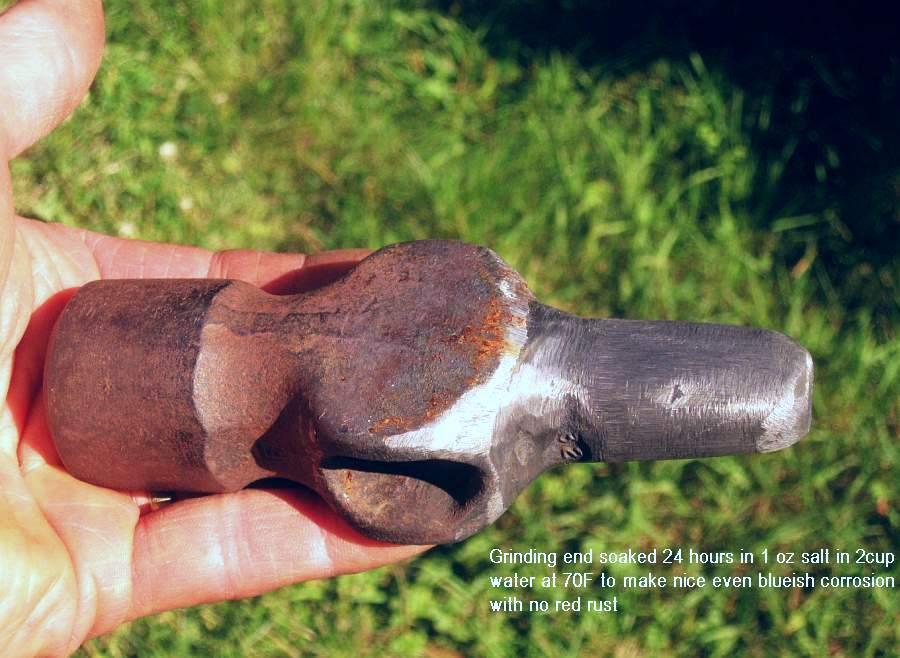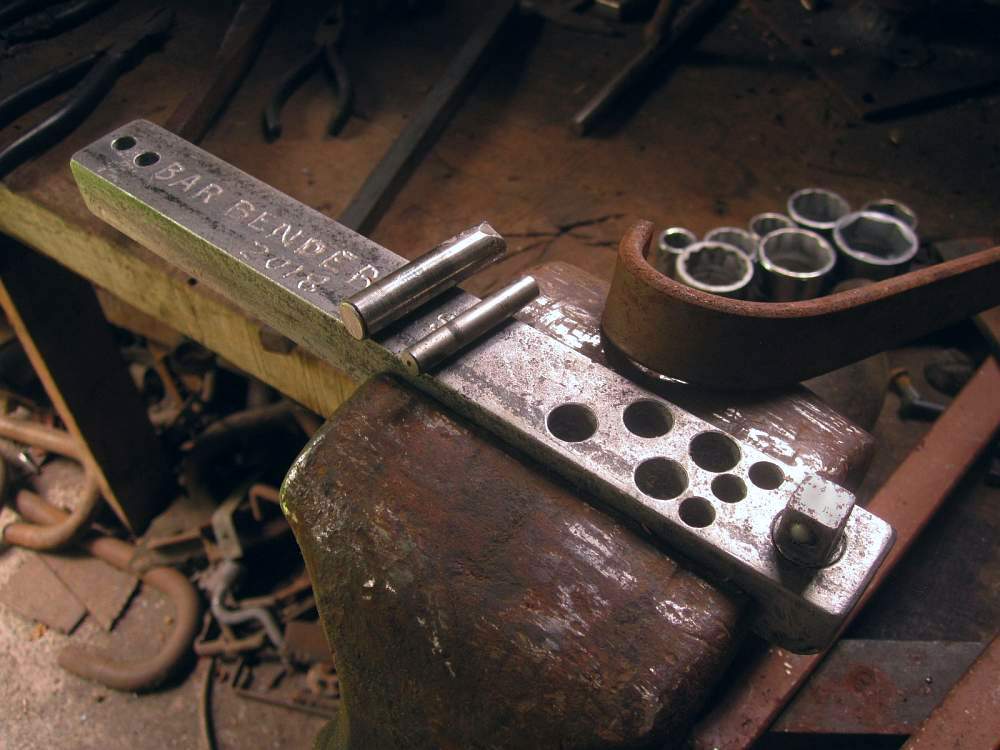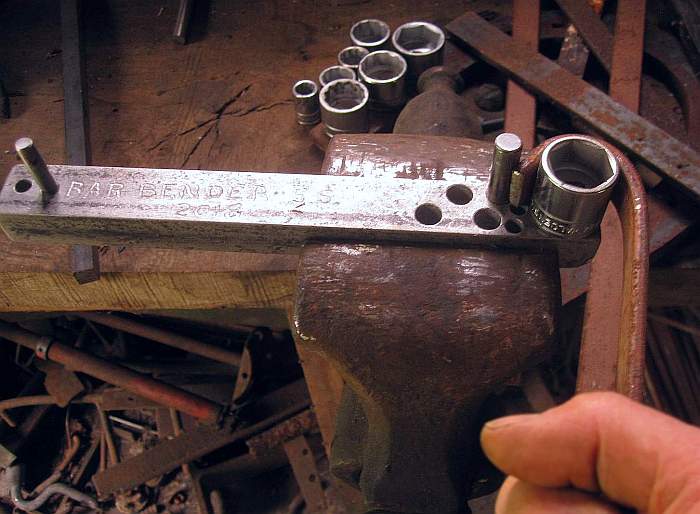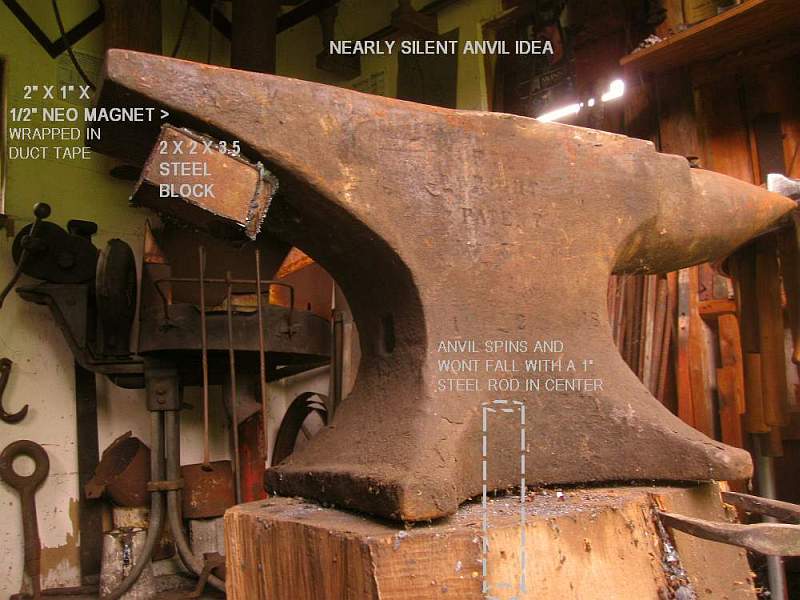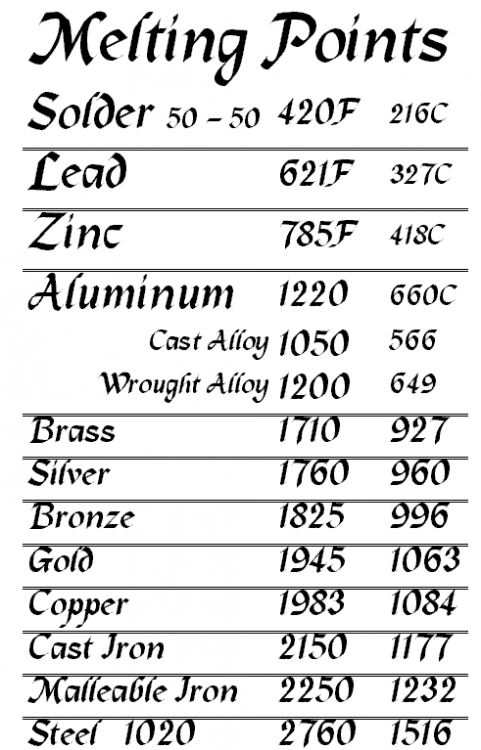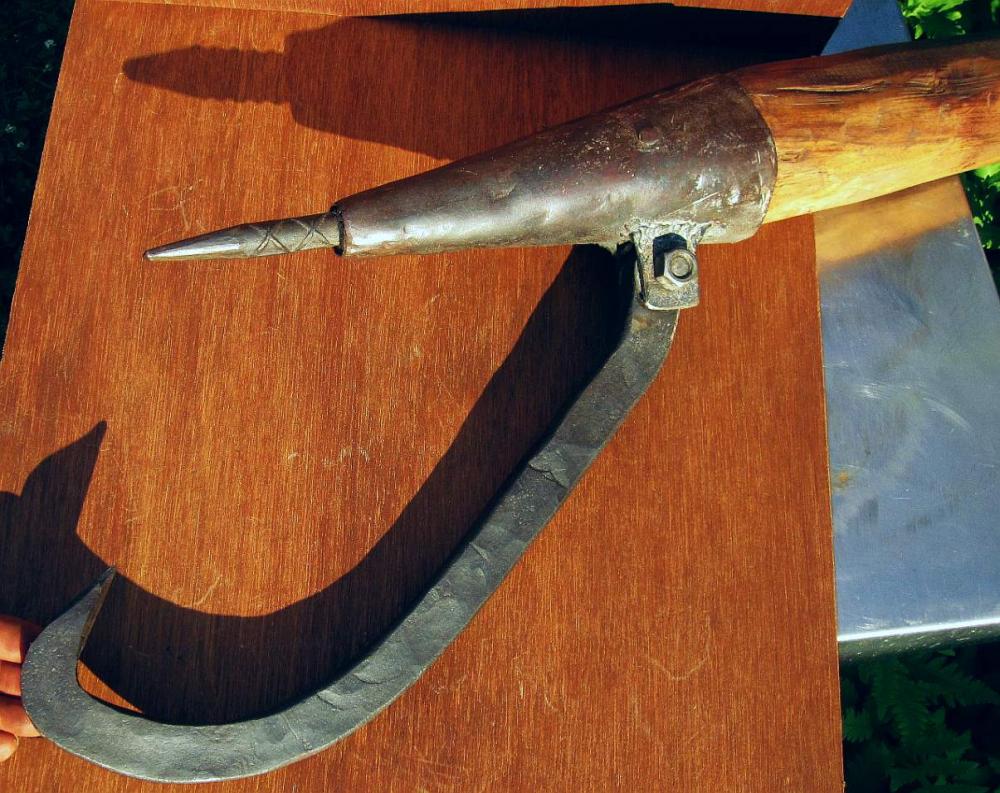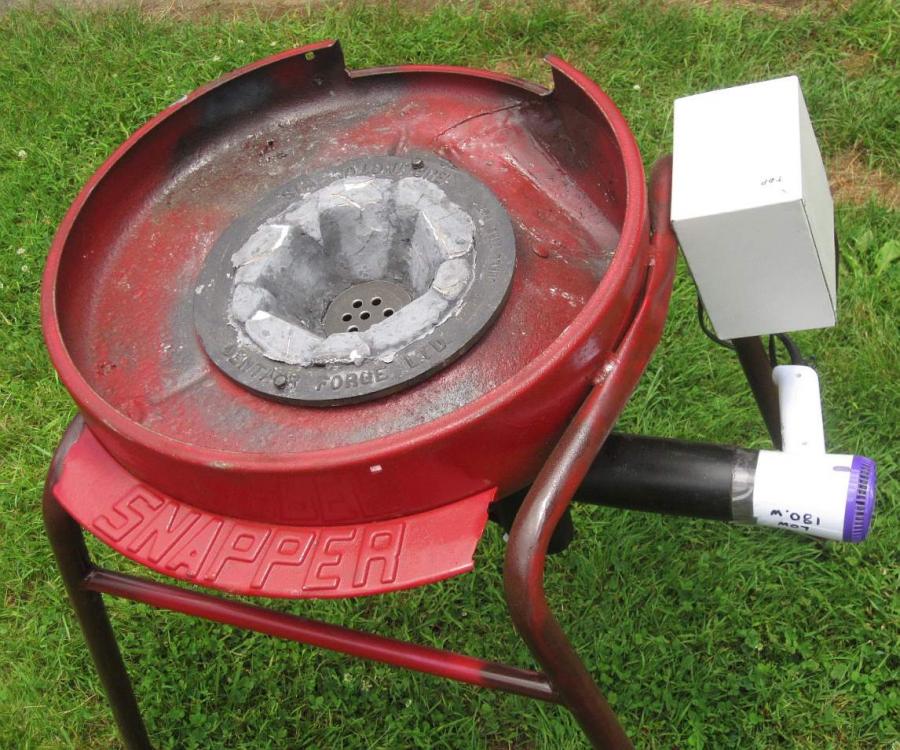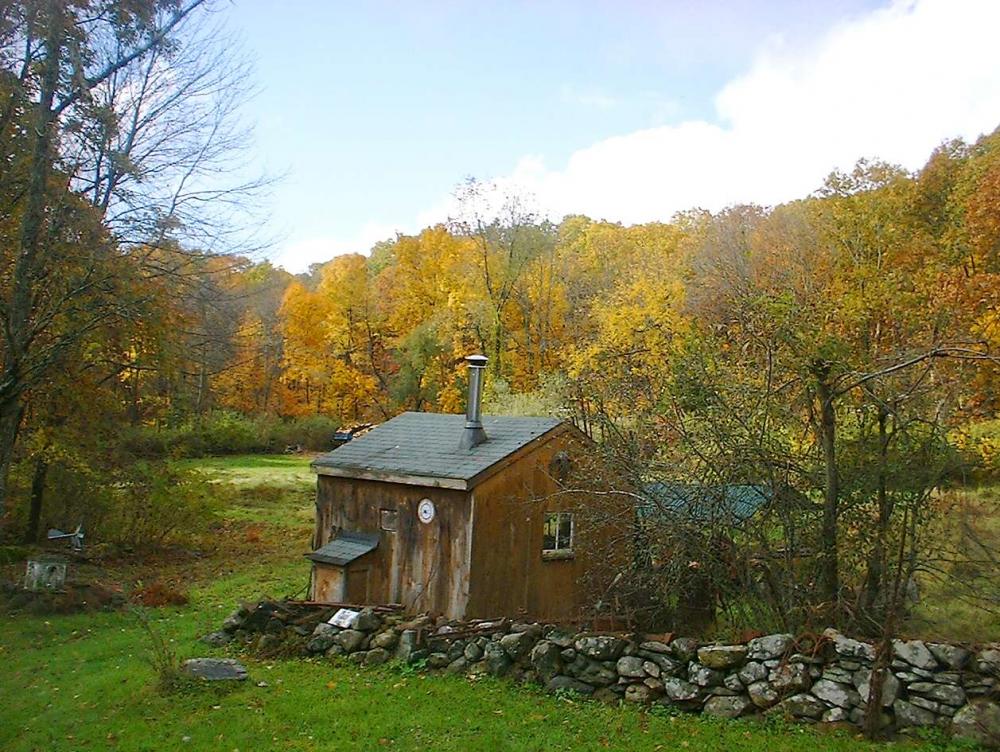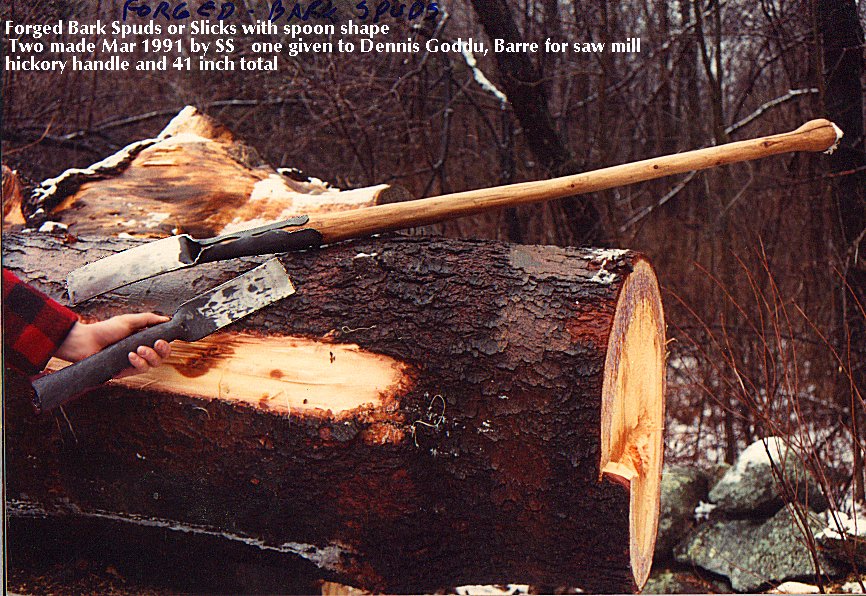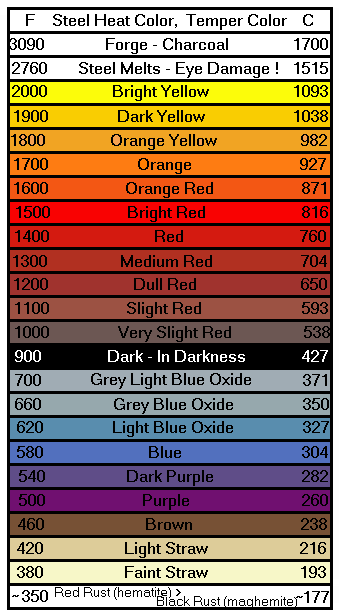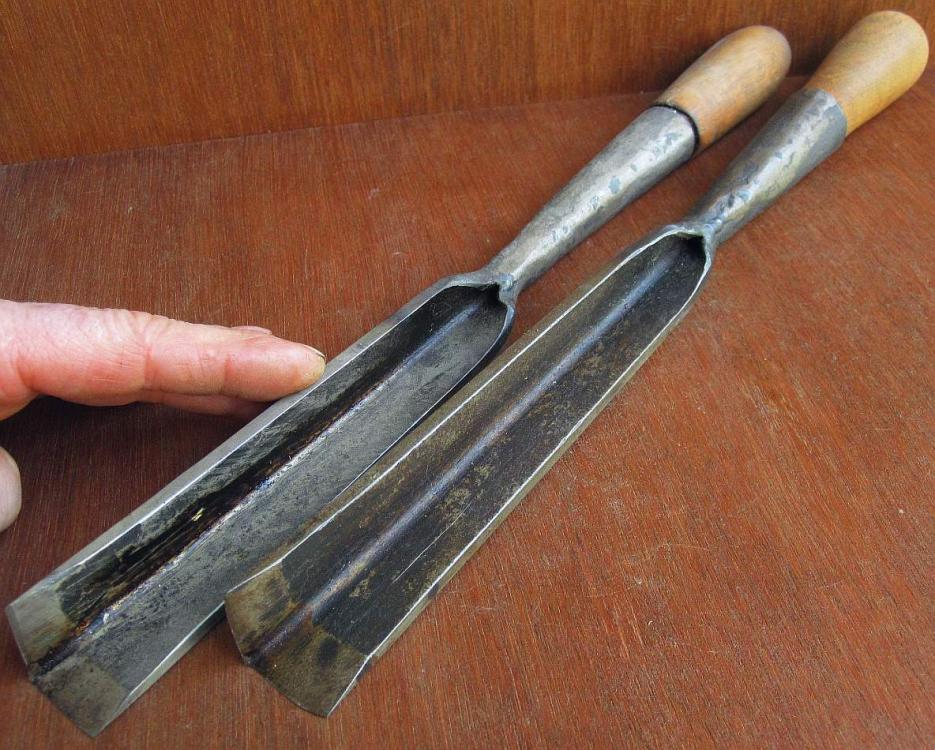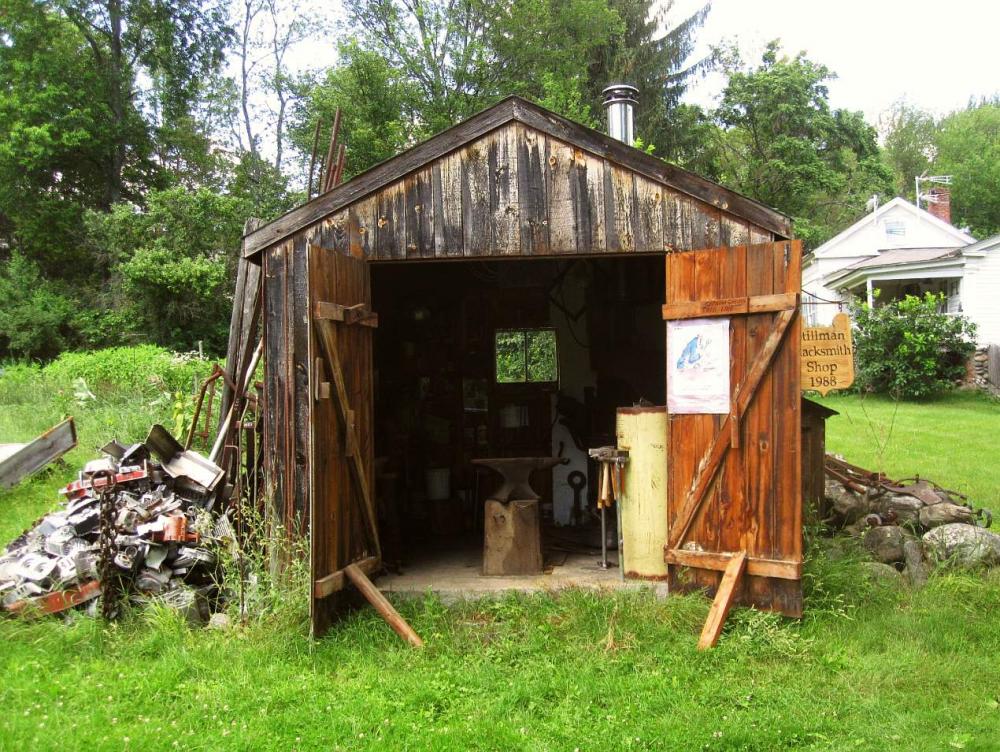
SLS
Members-
Posts
6 -
Joined
-
Last visited
Profile Information
-
Location
Shrewsbury, MA
Recent Profile Visitors
The recent visitors block is disabled and is not being shown to other users.
-
After trying salt, I realized I had something here. It takes 24 hours and I did no experimenting after that so other steel types should be tried. The blueing is a lighter look but after waxing it will darken. Might protect my bare steel parts over winter in the shop. If you have to sand or grind something, this will blue it. I dont want to do hot bluing as the hardness is set into this hole fuller. Note that I didnt stick it all the way under the liquid so you see untreated steel next to treated steel. A poor mans bluing? SLS
-
Hi, There was a picture (I think on Pinterest) of a bar bender for the vice that used a socket and a bolt holding it to a hex bar in a vice. I thought there must be a easier to use tool. This is what I came up with and I had an extra socket set to use with it and keep out in the shed. I used old drills for the pins that can take a beating (1/4" and 5/16"). I cut a old 3/8" socket extension off with an abrasive wheel, smoothed it up and pounded it in a drilled hole that was a jamb fit. That let me change sockets in seconds. I could have epoxied it but so far dont need to. This thing made me think of something. The metal shop class we had in highschool had a really nice strap bender bolted to the floor and 4' high with a 12" dia face full of holes and many dies that fit it (Di-Acro ?). It was green with a 25" yellow 1" handle bar that stuck out to walk into, ouch. Never saw one since. That shop classroom was small (15' x 30') but had a 300 amp DC arc, 150 amp TIG, 2 large acetylene welding/brazing sets with booths, 2' sheet bender, 4' shear, 3' roll bender, 9" hand disk grinders, 6" notcher, 12" reciprocating power metal saw on wheels, 24" propane furnace for lead seaming steel boxes, 40" spot welder, layout granite with height gages...all for free. I took the class all 6 years of highschool and must have walked out with 15 big finished projects. My neighbor bud made 6 all aluminum motocross racing gas tanks for his 125 and 250. Much later his long hair got caught in a drill press and went to the hospital. Almost the same thing happened to me when a hand held 9000 RPM 4" wire brush cup wheel caught and pulled my entire shirt off, but not a scratch on me from using all my arm strength to push outward. Today they probably wont allow kids under 19 to go anywhere near any of the above tools until hired, insured and trained at a company. The first year I got the highschool class they were compressor painting a car outside and the drift speckles got on all the other cars in the parking lot and that ended that. We made many throwing stars too. One friend made a machete and a leather sheath that straps to his knee and loops thru belt. The other teachers gave him strange looks the few days he kept it on. But I digress, sorry, getting too far off topic. SLS
- 3 replies
-
- strap bender
- strip bender
-
(and 1 more)
Tagged with:
-
Hi, I think the days when excessive bouncing hammers on anvils do not generate any increase in sales. So, around 1988 I moved my anvil from the cellar to the new 10 x 10 shed in the field and tried it out. It was ringing in a way I hadnt taken much note of in the cellar. My sense at the time that it was too loud even for me and hurt my ears. Its this type of anvil, the shape, it has too much overhang (PW-175lb). There are peoples houses who live within ear shot. I put a hardy tool in the anvil and it was a little better and that gave me an idea. I put a magnet on a 2 pound chunk of steel and stuck it to the heel and it was 90% quieter. The magnet pulls 30 pounds so it wont ever fall off. The energy from hammering still all goes into the red hot metal when forging and hammering but it just dosnt set up a undamped tone now. When bouncing a hammer, the anvil takes only 10% of the hammer energy, but how that anvil rings, wow. They gentleman who gave me my rivet forge who was very generous and saw some promise in me, did not like the magnet. I took it off and he did some demonstration forgings for me. It was a weekday at noon so the noise went unnoticed. Yes, he bounced that hammer all the time and it made me cringe, the unnecessary noise. When I use a hardy tool it pushes off the magnet. I reposition the magnet before hand most times. A permanent solution might be to cross drill the anvil heel with a 1" hole and fill it with a loose steel rod coated with grease. I also wanted to spin the anvil to position it. This PW anvil came with 3 casting porosity square jabs. As the casting cooled they jabbed the sides and bottom to give it a place for shrinkage and prevent cracks. Without that the bottom would be dished and need more machining. That gave me a place to put the 1" rod to let it spin without need for safety chains. My wood post goes 3' into the ground. The shop is small so I like moving the anvil around for different jobs. Our town exempts sheds of 10'x10' from taxes so thats the size it became. The anvil spins easy but it takes lots of force. SLS Noise From A Shop And Town Bylaws Prohibiting it: www.iforgeiron.com/topic/54476-neighbors-with-noise-conpliant/ 20mar18 (son_of_bluegrass While you're on the phone, ask about the specifics of any noise ordinances) (ThomasPowers A Fisher or Vulcan anvil is very quiet! February 22, 2011)
-
Hi Solder melting point is the one that is hard to nail down. I saw many numbers so I took the number from CRC handbook (216 C). I see in the G Brady, H Clauser Materials Handbook that SEA 50-50 melts at 181 C but has traces of antimony, and copper that lower it below my 216 C. Then it says that most commercial 50-50 melt at much higher temperature due to off spec addition of lead. Note that the melting point is the point of slush to solid change so its not a nice liquid at that temp. The best tempering solder to use is 60-40 that has no slush phase melts at 184 C. Someone can edit my chart .DOC and stick in any number they want for the solder they have. Or maybe new chart ideas could be made? SLS
-
Hi, I had to have a chart for the shop wall to help me with confusion around a few metals that I cast. There are lots of metals and alloys but these are 90% of the ones blacksmiths who cast in face molds or sand cast are going to run into. If nothing else, it lets visitors read something and see that steel is HOT. Either file attached prints full page for thumbtacking. The doc is better quality. SLS MeltingPointsSignForBlacksmithShop.doc
-
Hi, This site is a great place to learn and get ideas. I have a bunch of old smithing books but the ideas here are way better. I have been active since getting my own place in the woods in 1984. Spent last summer sprucing up and making a backup hairdryer forge, if something should happen to my 1945 rivet forge. I had made big peavy's, picaroons with a 10 pound hand hammer on my 175 lb PW anvil but those days are over. Please stop in for a tour if you are in the area. As far as I know, this is the only blacksmith shop in Shrewsbury, or even Northboro, Grafton, or Boylston. I have titanium sheet, rod, tools and the famous crowbar of 1997. I have cast lots of aluminum art, brass, bronze, lead, and zinc. I even cast 5lbs of thermit steel. That was nerve wracking with the sparks shooting 20 feet and the reactor shaking left and right violently. Guess filling it 1/3 full was Too Much. Steve Stillman
